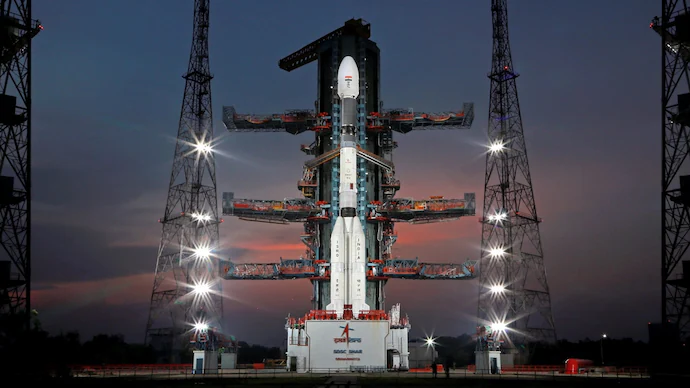In a significant achievement, India has successfully launched and inserted into orbit its first second-generation navigation satellite, NVS-01. Following a 19-minute flight, the NVS-O1 satellite was deployed into a Geosynchronous Transfer Orbit.
The three-stage GSLV rocket, measuring 51.7 meters tall and weighing 420 tonnes, launched from a pad at Sriharikota at approximately 10.42 am.
About the Satellite
The NVS-01 satellite, a component of India’s satellite navigation system known as NavIC (originally named Indian Regional Navigation Satellite System or IRNSS), weighs 2,232 kg. The Geosynchronous Satellite Launch Vehicle (GSLV) carried the satellite. NavIC operates similarly to a Global Positioning System (GPS).
The Indian satellite navigation system, NavIC, comprises nine satellites, seven in orbit and two on standby. As per a report from the IANS news agency, the NVS series of satellites are designed to maintain and enhance NavIC with upgraded features.
The NVS-01, with a mission lifespan of 12 years, is powered by two solar arrays that can generate up to 2.4kW of power, and it relies on a lithium-ion battery during eclipses. This series incorporates payloads that function on L1, L5, and S bands, indicating an expansion of services.
The Indian Space Research Organisation (ISRO) states that the L1 navigation band is commonly used for providing Position, Navigation, and Timing (PNT) services for civilian use and for ensuring interoperability with other Global Navigation Satellite System (GNSS) signals.
“Apart from the L1 band, we have a highly secure code for strategic signals in the L5 and S bands,” a senior ISRO official stated.
ISRO highlights that NavIC can be used for various civil and strategic applications.
About the First-Generation Satellites
At present, there are eight first-generation NavIC satellites in orbit. According to a senior ISRO official cited by the news agency, four of these eight NavIC satellites are utilized for navigation services. At the same time, the rest are dedicated to messaging services.
India has launched nine first-generation NavIC satellites, including two standby ones. However, the first standby satellite was lost due to the Polar Satellite Launch Vehicle’s (PSLV) heatshield, not opening.
Each satellite also houses three atomic clocks crucial for delivering accurate positional data.





































![Best Gaming Keyboards Under ₹2000 in India [2025 Edition]](https://ibixion.com/wp-content/uploads/2025/05/universal_upscale_0_e88e4495-cad7-4ea6-a771-51cbbabcf328_0-324x160.jpg)



![Best ways to Watch Cartoons Online: Free & Paid [Website List] watch cartoons online](https://ibixion.com/wp-content/uploads/2020/05/small-boy-with-down-syndrome-watching-cartoon-on-tv_t20_oRlole-1-100x70.jpg)




![BombSquad Promo Code [400* Free Ticket] Latest & Updated](https://ibixion.com/wp-content/uploads/2017/05/bombsquad-promo-code-main-100x70.png)